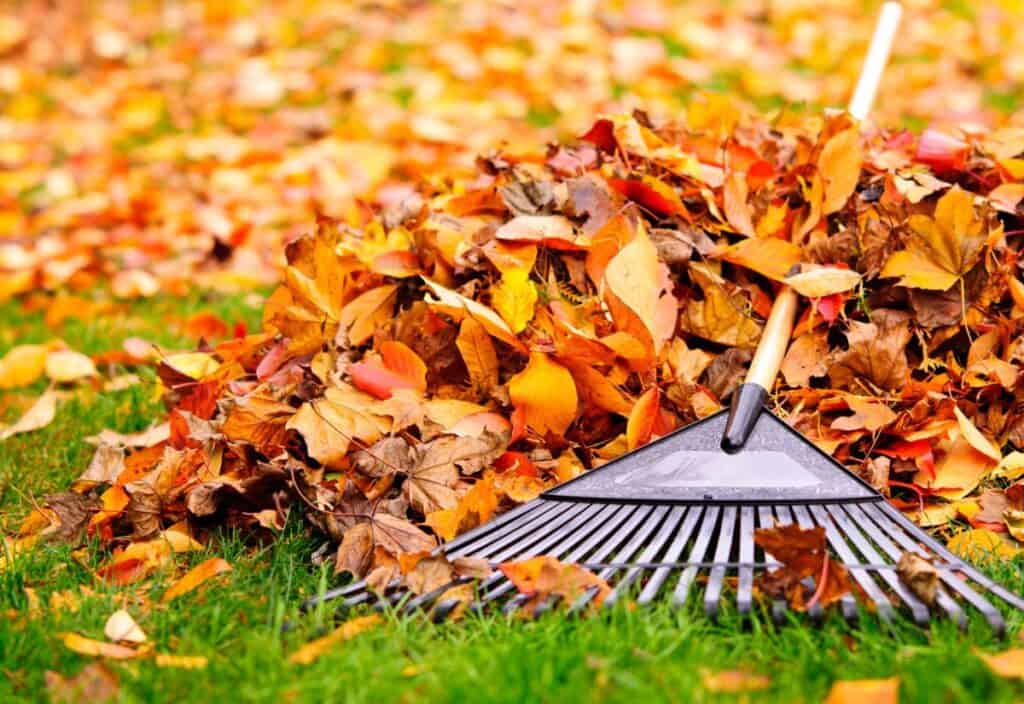Fall is coming, and the question often wondered is “should I rake the leaves out of my yard this fall?” The answer may not be as cut and dry as we would like.

The answers to that question are varied. Some people tirelessly bag up every last leaf, year after year, and set the bags on the corner for the trash to pick up to take them to the landfill. This is a popular thing to do, but could leaf litter be good for a lawn’s health?
The good news is that environmental experts have been thinking about this very question for a long time. As it turns out, a thick layer of leaves might actually be good for lawn maintenance.
“According to the U.S. Environmental Protection Agency, leaves and other yard debris account for more than 13% of the nation’s solid waste,” says an article on the National Wildlife Federation’s website nwf.com “Without enough oxygen to decompose, this organic matter releases methane gas, which is more than 25 times more potent than carbon dioxide in trapping heat in the atmosphere.”
The National Wildlife Federation warns that removing leaves may be harmful because wildlife such as caterpillars, birds, butterflies, and moths all depend on leaf litter for their primary food source and protection.
“I am solidly in team no rake. Yes I am lazy. However, leaves provide habitat for pollinators like butterflies and bees. These insects need all the help they can get. Plus, leaves are a great nutrient-rich mulch so it’s good for your lawn to have leaf cover.
P.S. I reside in Maine, land of so many leaves.



”
—Jennifer Osborn, Kitchen Serf
Some homeowners believe that letting the the fallen leaves lie will kill their lawn. Others have Homeowners Associations that insist on leaf removal and may levy big fines for failure to comply.
So what is a homeowner with trees to do?
There are many alternatives to raking, bagging up, and leaving your leaves to go to the landfill.
- Use a leaf blower to blow the leaves away from your house every few days. Bugs like mosquitos and critters like to live under the damp leaves, but leaving them close to your house could make it more convenient for them to come inside. If you gently blow the leaves away from your house into your lawn, you are still giving them a place to live but not so close to where you live. Note: it is best neighborly practice to not blow your leaves into the street or your neighbor’s yard.
- Mow the leaves. Using the lawn mower to chop the leaves helps protect root systems and moisture and provides nitrogen and organic matter that your grass needs and will thrive on. Does that help the bugs and wildlife? More than just bagging up the leaves and sending them off to the landfill, but not nearly as great as just letting them lie undisturbed, providing shelter for critters to hide under. Insects will still love the leaf mulch for food and a place to live. Mulched leaves can also be transported to other parts of the yard, garden, or flowerbeds to spread the love and provide insulation for plants during the winter. If you have excessive leaf matter, consider a mulching mower.
“I don’t rake but I do mulch. I am surrounded by large oak trees that produce a blanket of leaves every fall. If I left them as-is they would be a thick slimy mess once the snow melted in spring. So I use my lawnmower to chop them into smaller pieces and leave the mulch right on the grass. These pieces break down over the winter, returning the nutrients to the soil.”
—Sue LeMay-Jaeger, Sula and Spice
- Throw whole or mulched leaves in the compost pile or compost bin.
- If you MUST rake your leaves, bag up the leaves and see if you can donate them. Some cities and counties have programs to help with this and offer free mulch in return. Or you might find a local farmer or gardener who would love to have your leaf matter for their winter or fall garden.
- Lastly, you could always burn your leaves if laws allow it. If you are totally overrun with leaves and must rake some to clear a walking path and you cannot find anyone who wants dry leaves, consider burning your leaves. Consult your county’s burn ban and restrictions, of course, but collecting leaf piles in the burn pit can be a great, eco-friendly way to get rid of tree leaves.
What do you do with your fall leaves?
Gena Lazcano is the creator, writer and recipe creator at Ginger Casa. She loves her air fryer and pressure cooker and loves creating new recipes to share. She is also a self-proclaimed houseplant expert and a lover of all things garden related. She and her husband live with their three sons in East Texas.
This article originally appeared on Ginger Casa.